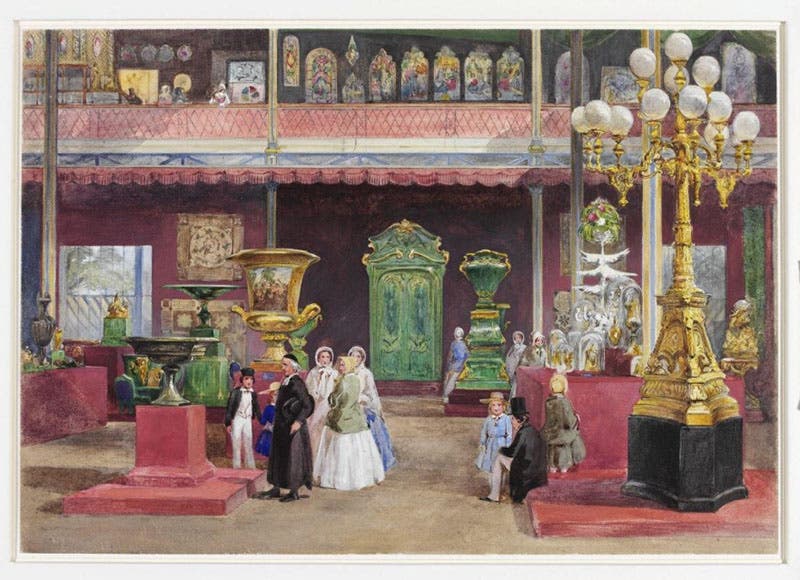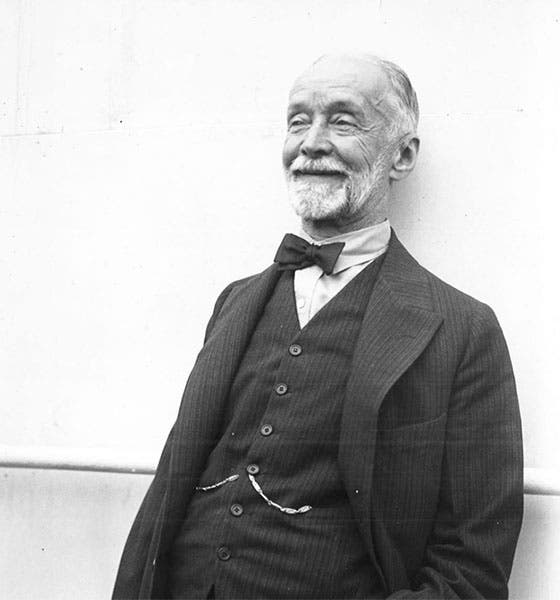Scientist of the Day - August Heckscher
August Heckscher, a German/American businessman and philanthropist, was born Aug. 26, 1848, in Hamburg. He moved to the United States in 1867 and formed a succession of successful mining companies, and then moved into New York City real estate, where he made more millions. In later life, he began giving it all back. He loved children, parks, and art, and so he established the first playground in Central Park, created a new park in his adopted home of Huntington, Long Island, and also established there in 1920 the very fine Heckscher Museum of Art. His grandson, also named August, became commissioner of Central Park in 1967, staged the first of the big Central Park free concerts (with Barbra Streisand and an audience of 200,000), and previously was cultural advisor to President Kennedy.
So what does this all have to do with science and the Linda Hall Library? Well, it has nothing to do with science, but a great deal to do with the Library. August Heckscher visited Russia in 1910 and had an audience with Tsar Nicholas II, at which time the Tsar gave Heckscher a monumental malachite tazza that had originally been exhibited at the London Crystal Palace Exhibition in 1851. It was crafted by the Demidoff firm of St. Petersburg. We don't know where the tazza sat for the next 60 years, but at some point, it passed into the possession of Helen Spencer of Kansas City, and she in turn presented it to the Linda Hall Library in 1972, where it now stands in the Main Reading Room. If you ever come in the front door of our Library, we you will see it immediately – it is hard to miss (third image).
Several years ago, I discovered the existence of a collection of 11 watercolors at the Victoria and Albert Museum in London, depicting various Crystal Palace national pavilions, which were painted before the exhibition actually opened to the public. One of them, by Henry Clarke Pigeon, showed the Russian Court in the Crystal Palace (first image). And I was happy to spot, on the left, in the very back, just to the right of the window and under the square wall-hanging, a tall malachite tazza. It would appear to be the very object that Heckscher carried back to Long Island and that now occupies the place of honor in our Library.
There is still a lot we do not know about the provenance of our tazza – we have no idea, for example, how the tazza got out of Heckscher’s warehouse and into the clutches of the ever-acquisitive Helen Spencer. Perhaps we will find that out one day and we will be able to update this post.
If you are part of an older generation and read the New York Times, the name “Heckscher” might sound familiar. If so, you might be recalling a news story of 2005, when it was revealed that the Heckscher Museum of Art was negotiating to sell its most famous painting, Eclipse of the Sun (1926), by George Grosz, to a private party for $19 million, in order to raise money for expansion. In the art museum world, deaccessioning art to pay for capital improvements is a real no-no, and when word got out, public outrage quickly put an end to the plans. If you look at the Museum’s webpage for the painting, you will of course find no mention of any of this. Institutional memory is so wonderfully malleable.
Heckscher died on Apr. 28, 1941 and was buried in Woodlawn cemetery in the Bronx, not too far from Paul Du Chaillu and John Goffe Rand, in a not so attractive mausoleum that we chose not to show you. His principal memorials should be the Museum and the Heckscher Playground in Central Park. And, of course, our tazza.
William B. Ashworth, Jr., Consultant for the History of Science, Linda Hall Library and Associate Professor emeritus, Department of History, University of Missouri-Kansas City. Comments or corrections are welcome; please direct to ashworthw@umkc.edu.







![Using an astrolabe to measure the depth of a well, woodcut in Elucidatio fabricae vsusq[ue] astrolabii, by Johannes Stöffler, 1513 (Linda Hall Library)](https://assets-us-01.kc-usercontent.com:443/9dd25524-761a-000d-d79f-86a5086d4774/a998eb50-55d2-4a88-ace2-a50aa5fa86e7/Stoffler%201.jpg?w=210&h=210&auto=format&fit=crop)

